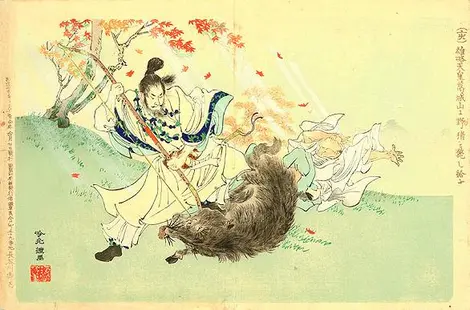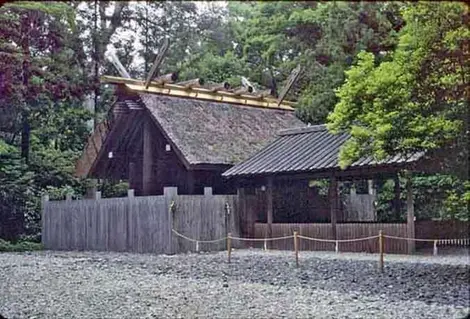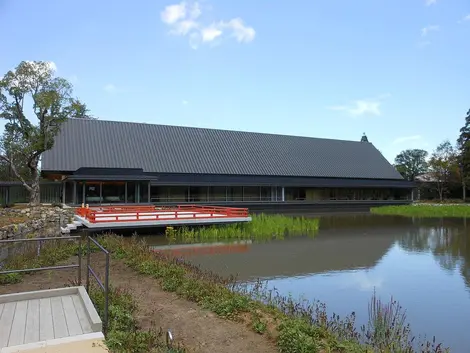The Geku Shrine 外宮
sun and rice
The outer Ise shrine , less prestigious than the Naiku, is steeped in mystery and dedicated to an ancestral deity of good harvests.
The legend explains it as follows: one night, the goddess Amaterasu appeared in a dream to the Emperor Yūryaku (end of the 5th century), asking him to protect the sacred food that men bring to her every day...
The emperor then had a divine figure of good harvests and rice, Toyouke Omikami, transported from Tanba (his former shrine) to Ise. The external sanctuary of Gekû was born, coming to be added to the Naikû (residence of Amaterasu) , both dedicated to the worship of the sun and rice, two symbols of Japan par excellence... Since then, Toyouke is considered to feed Amaterasu, and that the two shrines are complementary.
Amaterasu's kitchen
One reaches the heart of the Geku by passing near the Magatama pond , in front of which ceremonies and ritual dances take place during the rice harvest in fall, before moving towards the main alley which leads to the Shôden , the main pavilion. The buildings here are almost all similar to those of the Naikû, allowing to admire the proto-Buddhist architecture known as shinmei zukuri . Next to it, in the Imibiya-den , the dishes are prepared daily for the goddess Toyouke, who will bring them to Amaterasu.
At the entrance of the Geku opened in 2012 the Sengukan, a museum which exhibits models of the buildings of the shrine, and gives explanations on the ritual reconstruction which takes place every twenty years.
Address, timetable & access
Address
Timetable
5 mins by bus from Naikû10 mins walk from Iseshi and Ujiyamada stationsWebsite
http://www.isejingu.or.jp/en/about/index.html



















